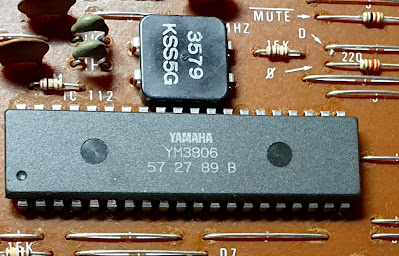Secrets of the YM2154

After a break, I returned to the PSR-70 reverse engineering project: t he YM2154, a.k.a. RYP4 is still an unknown territory. The time has come to reveal its secrets. R YP4 is used a bit more widely than OPQ. Besides PSR-60/70 it is used at least in PSR-80 and RX- 11/15/21 drum machines. This time I did remember to check for service manuals, and found one for RX-11: https://elektrotanya.com/yamaha_rx11_sm.pdf/download.html . This contains a full schematic and other useful information. T racing register writes Because I had good results with OPQ by tracing what the PSR-70 firmware is writing to the chip registers, this would be a good starting point also for RYP4. The chip has 128 registers which reside in Z80 I/O address space at addresses 80H...FFH. Looking at the disassembly listing reveals quickly that there is no single function which would take care of all the register writes, like OPQ had. There are many IN and OUT instructions accessing the RYP4 ...


